France’s undulating landscapes are criss-crossed with innumerable waterways that feature impressive architectural structures like bridges and aqueducts. On a European Waterways hotel barge cruise along the historic canals of France, there’s a very good chance that you’ll experience one of these engineering feats. These elegant structures cross rivers and valleys and offer stunning views to those gliding over them.
Top Four Iconic Aqueducts in France
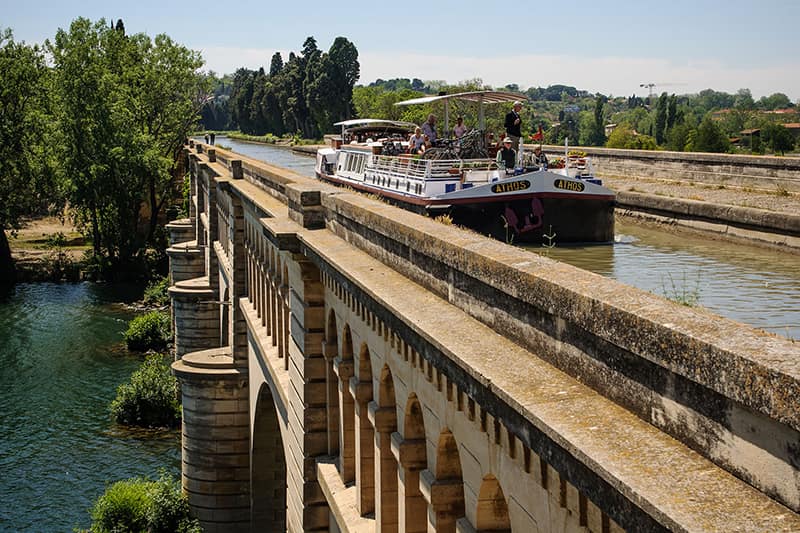
What is an Aqueduct and why were they built?
Aqueducts were invented to conduct water over the land from a source point to a place of distribution. Since Roman times, they have been used to supply water for drinking or irrigation and, for the last 350 years, to allow navigable canals to span valleys without the need for locks to descend and ascend the slopes.
How do Aqueducts work?
Before water pumps were invented, people needed fresh water but didn’t have the scientific knowledge to channel it over the highs and lows of varied landscapes. Water could not travel up, so the Romans invented a way of carrying the water in a gentle downward gradient using only the natural force of gravity. Navigable canal aqueducts work in the same way, allowing a level watercourse to traverse undulating terrain.
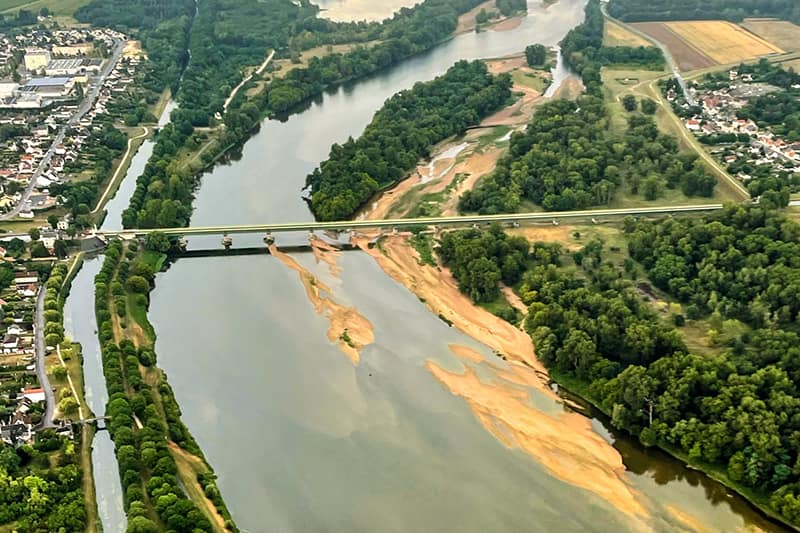
How old are aqueducts?
The first aqueduct was built by the Romans more than 300 years BC. The Romans were very resourceful and good at creating solutions to improve the quality of living in the Roman Empire. The first navigable canal aqueduct was the Repudre Aqueduct on the Canal du Midi, completed by architect Paul Riquet in 1676 and still crossed every week by our hotel barge Enchanté.
What is the difference between an aqueduct and a viaduct?
As imposing large structures built above valleys and ravines, aqueducts and viaducts may look very similar. Both often feature large arches that act as windows to the landscapes behind, but aqueducts and viaducts have two very different purposes. Aqueducts were built to conduct water over the landscape, whereas, viaducts were created to carry roads and railways over difficult-to-cross places.
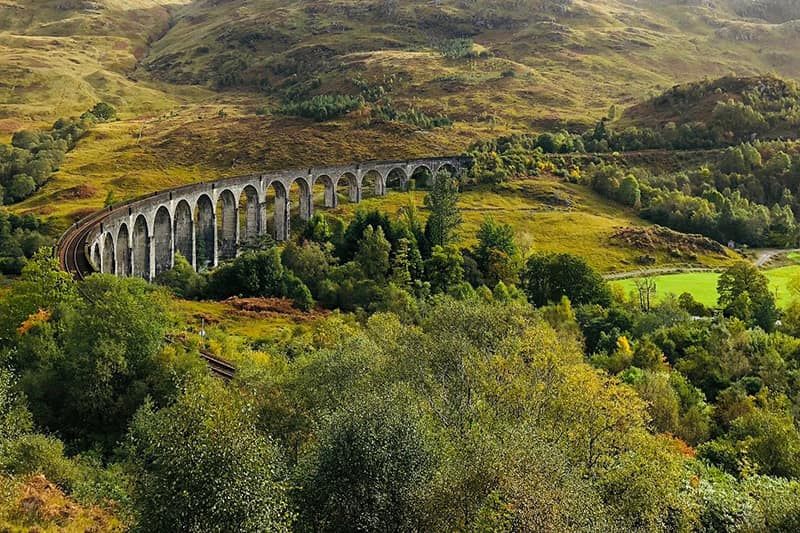
What is the largest aqueduct in the world?
The longest and highest historic aqueduct in the world is Pontcysyllte Aqueduct in Wales, Great Britain, built in 1805. At 3.5 metres-wide, 307 metres-long and 38 metres high, it is wide enough to carry barges on the Llangollen Canal. In 2003, the Magdeburg Water Bridge was completed in Germany at nearly 1 kilometre long.
The Top Four Aqueducts in France
1. Pont du Gard
The UNESCO World Heritage listed Pont du Gard has been recognised as one of the biggest accomplishments of the Roman Empire. It is the tallest Roman aqueduct in the world and carries water for over 50 kilometres through the French countryside to the city of Nîmes, in the South of France. The Pont du Gard aqueduct is 275 metres-long and passes over the Gard River. Designed to carry irrigation water on three different levels, each tier of the aqueduct is supported by a stone arched structure.
Built in the middle of the 1st Century AD, the Pont du Gard is an excellent example of how advanced Roman architects were for their time. The enormous aqueduct towers above the Occitanie region’s landscape, rising well above the Gard River, which is well known for its floods. The aqueduct was designed with this in mind, and large arches were included in the first level to allow high waters to pass through them.
The Pont du Gard aqueduct hasn’t been used for carrying water since the 6th century. In medieval times, the second level of the bridge was excavated to make it wide enough for humans and animals to pass through. In the eighteenth century, the Pont du Gard was adapted to accommodate a road bridge on the first tier. Now holding an impressive water channel on its top level, the aqueduct adds interest to the valley it travels through and transfigures the landscape.
Interesting fact: Those with eager eyes will be able to spot the stonecutters’ and quarrymens’ tool marks on the hewnstone blocks of stone that Pont du Gard was built from.
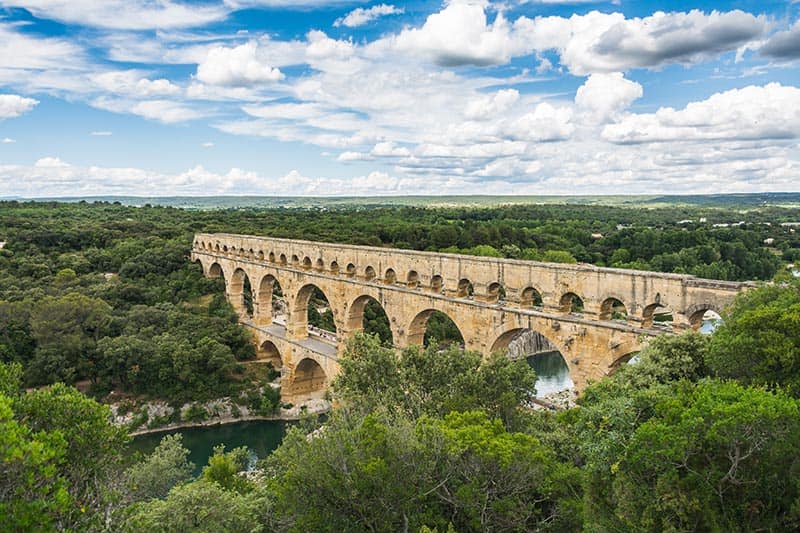
2. Pont-Canal d’Agen, also known as The Agen Aqueduct
The Pont-Canal d’Agen is on the Canal de Garonne in Southwest France, on which hotel barge Rosa cruises. Built in the mid-19th century under the direction of the engineer, Jean-Baptiste de Baudre, the first stone was laid by the Duke of Orleans. At a very respectable 530 metres-long, at the time it was built it was the longest aqueduct in France. However, the achievement was quickly eclipsed by other aqueducts mentioned in this blog!
At only around nine metres-tall, the Pont-Canal d’Agen is low in height, compared to many other aqueducts. Nonetheless, this aqueduct commands wonderful views of the River Garonne as it passes over the top. Pont-Canal d’Agen is a grand aqueduct to view from the ground too, as its length and impressive 18-metre-wide arches give it a stately appearance.
Pont-Canal d’Agen is one of two aqueducts crossed by our hotel barge Rosa. The other, Pont-Canal du Cacor, is near the ancient town of Moissac.
Interesting fact: The Pont-Canal d’Agen is too narrow for barges to pass one another, so boats must wait until there is no oncoming traffic to cross!
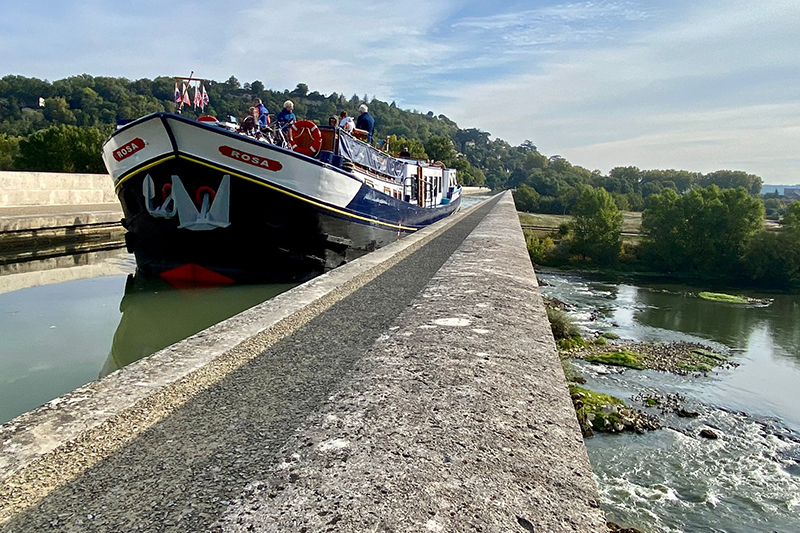
3. The Briare Aqueduct, or Pont-Canal du Briare
Based in the Loire Valley, the Pont-Canal du Briare is a marvel of engineering and an example of truly elegant architecture. Crossing the River Loire, the Pont-Canal du Briare is close to 670 metres long. Constructed between 1890 and 1896, it held the record as the world’s longest steel canal aqueduct for over one hundred years, losing its badge of honour in 2003.
Designed by the infamous Gustave Eiffel, Pont-Canal du Briare features dual towpaths. This aqueduct was built with barging in mind and has eight sluice gates to fully empty it when there is a risk of the water freezing.
However, the Pont-Canal du Briare is not only architecturally impressive, but also a work of art. It is interspersed with no less than seventy-two lampposts and large pillars bearing coats of arms at each end. The Renaissance style of the Pont-Canal du Briare make it a unique place to walk or cycle alongside a barge.
If you choose to travel with us on the luxurious hotel barge, Renaissance, then you will have the pleasure of crossing the Pont-Canal du Briare and enjoying the scenery from your vantage point.
Interesting fact: The Pont-Canal du Briare is often mistakenly thought to be on the Briare Canal, but it is in fact, part of the Canal latéral à la Loire.
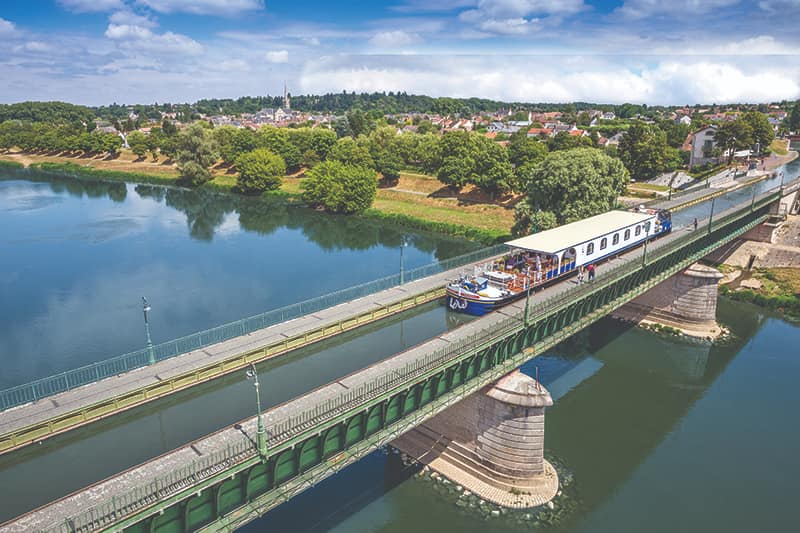
4. The Orb Aqueduct, or Pont-Canal de l’Orb
The Pont-Canal de l’Orb aqueduct certainly isn’t as long as the Pont-Canal du Briare, but at nearly 30 metres-wide, it is much wider. Designed by the engineer, Jean Magues, it carries the UNESCO listed Canal du Midi over the River Orb at Beziers.
Built in the middle of the nineteenth century, the Pont-Canal de l’Orb aqueduct was especially significant when it was built because it gave boats safe passage over the River Orb. Renowned for its treacherous conditions, in the late eighteenth century, the River Orb was so bad that it could often be impassable for weeks. The building of the new Pont-Canal de l’Orb meant that boats were no longer at the mercy of the weather and could go about their business.
10-passenger hotel barge Athos, and 8-Passenger hotel barge Anjodi will take you over the Pont-Canal de l’Orb, so that you can admire the River Orb from a safe height. Anjodi may be familiar to fans of celebrity chef Rick Stein, who recorded the successful ‘French Odyssey’ TV series on board as he travelled the Canal du Midi.
Interesting fact: The Pont-Canal de l’Orb is located close to the famous seven-rise lock staircase of Fonserannes, so if you barge the Canal du Midi in this area, you can see both points of interest!
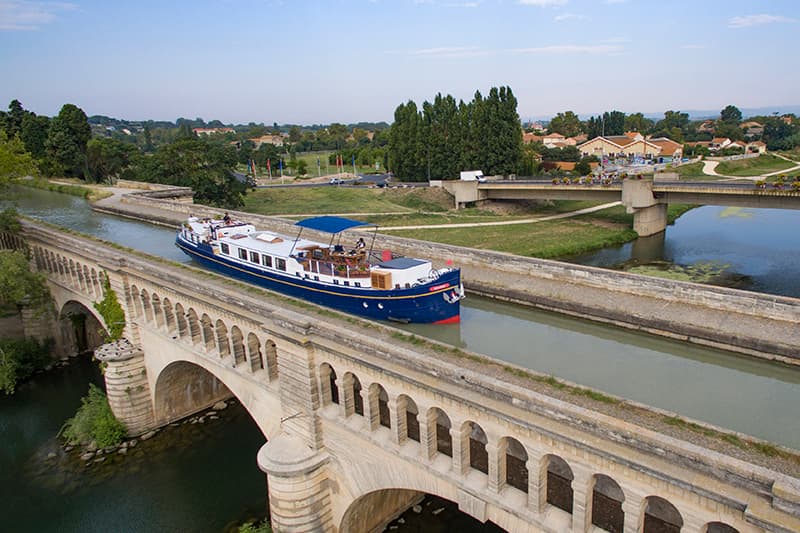
Cruise over the Aqueducts of France
Whichever hotel barge you choose for your voyage of gentle exploration, there are so many opportunities to see the exceptional aqueducts of France. With their innovative architectural designs created over the centuries, you’ll likely visit some unforgettable aqueduct crossings when you barge on France’s most famous canals.
For information delivered to your doorstep, order a free copy of our brochure or perhaps have a no-obligation chat with a member of our team: Contact Form.
 English
English
 Spanish
Spanish French
French German
German Norwegian
Norwegian Portuguese
Portuguese Swedish
Swedish Italian
Italian Russian
Russian Simplified Chinese
Simplified Chinese Japanese
Japanese